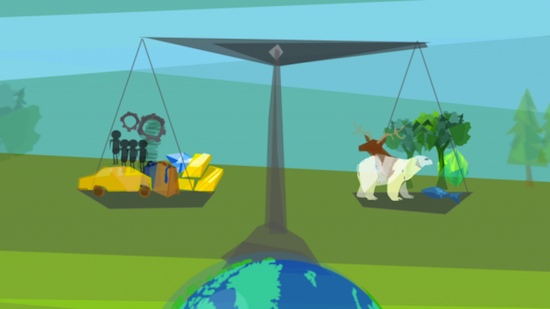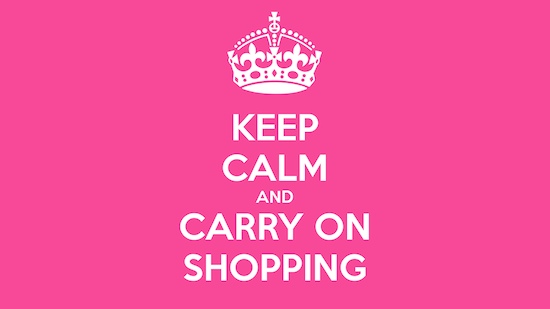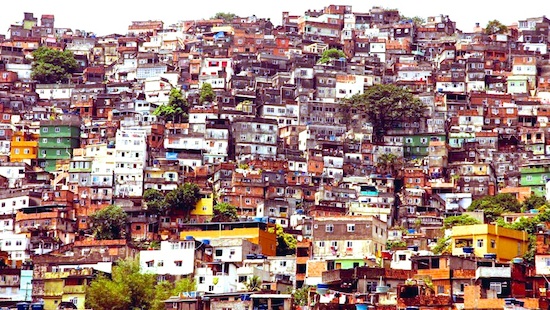
Thomas Pogge and Alnoor Ladha | OCCUPY.com
Most people haven’t heard about the United Nations Sustainable Development Goals (SDGs). And if you have, there’s probably a rosy halo emanating from the deep recesses of your subconscious. If so, the UN, the World Bank, the Gates Foundation, ONE.org, Save the Children and other counterparts of the charitable-industrial complex have done their job well.
The new SDGs, a set of 17 goals and 169 targets, have replaced the Millennium Development Goals (MDGs) and there is a battle for mindshare over the merits of this plan. The SDGs are important because they are a once-in-a-generation declaration of what the world’s power elites are willing to publicly commit. In fact, they are the only shared international agreement to address global poverty. As such, they capture many of the central assumptions and norms that underpin the global political economy.

Keep Calm and Carry on Shopping
At first glance, the rhetoric of the SDGs seems irresistible. They talk about eliminating poverty “in all its forms, everywhere” by 2030, through "sustainable development" and even addressing extreme inequality. None of which we would argue with of course. But as with all half-truths, one just has to dig beneath the surface for motivations to unravel.
Recent research by economist David Woodward shows that to lift the number of people living under $1.25 a day (in “international dollars”) above the official SDG poverty line, we would have to increase global GDP by 15 times – assuming the best-case-scenario in growth rates and inequality trends from the last 30 years. That means the average global GDP per capita would have to rise to nearly $100,000 in 15 years, triple the average U.S. income right now. In a global economy that is so inefficient at distributing wealth, where 93 cents of every dollar of wealth created ends up in the hands of the richest 1%, more growth is only going to enrich the rich while destroying the planet in its wake.
Of course, it is completely possible to achieve the necessary goal of reducing poverty, but not through the UN’s growth-based, business-as-usual strategy. Poverty can only be eradicated by 2030 if we address two critical issues head on: income inequality and endless material growth.
First, we must address the enormous inequality that has accumulated in the last 200 years. The richest 1% of humanity will very soon own over half of private wealth. And indeed, large increases in the socioeconomic position of the poorer half can be achieved through very modest inequality reductions. For example, a hypothetical doubling of their share of global income, from 4% to 8%, even if it came entirely at the expense of the richest 5%, would only reduce the incomes of these top earners by less than 10%.
The SDGs inequality goal (target 10.1) allows current trends of income concentration to continually increase until 2029 before they start to decline. This totally ignores the structure of our economic system which creates inequality in the very rules that enforce and articulate the current distribution of wealth.
The other essential task is for the world’s nations to adopt a saner measure of human progress; one that gears us not towards endless GDP growth based on extraction and consumption, but towards the wellbeing of humanity and our planet as a whole. There are plenty of options to choose from, all of which have been ignored in the SDGs. Instead, Target 17.19 says only that they will, “by 2030, build on existing initiatives to develop measurements of progress on sustainable development that complement GDP.” In effect, the SDGs perpetuate severe poverty and leave this fundamental problem to future generations.

Magical Accounting
Much of the credibility of the Sustainable Development Goals rests on the story that their predecessors – the Millennium Development Goals – have, on the whole, been a success. They have, so we are told, halved poverty since 1990.
The clear implication is that the basic model of GDP growth is working so well that we should trust it to finish the job. And whereas it’s certainly true that progress has been made on some problems in some places, many researchers, including the authors of this article, have shown that this does not add up to overall success. In fact, the progress has been so uneven, and the core data has been so massaged over the years, that it’s more accurate to say that the claim to have halved poverty is more magical accounting than verifiable fact.
For example, shortly after the MDGs were agreed, the UN moved from an aim of halving absolute numbers to halving the proportion of people in poverty. Then, they went from halving the proportion of impoverished people globally to just focusing on the developing world. They even went back in time to change the baseline year of recording, from 2000 back to 1990, which conveniently allowed them to co-opt all of China’s gains in lifting people out of poverty in the 1990s, despite the fact that China’s policies bear little resemblance to the UN’s prescriptions. And probably the most brazen of chimeric acts: they even changed the definition of poverty, moving their international poverty line (IPL) multiple times.
It seems the MDGs are a virtual Potemkin Village, stage managed to keep the true poverty trends from being exposed. For the successor goals to have any credibility, they must adopt a more realistic measure of poverty, actually address the root causes, and guard against the kind of statistical manipulation that so blighted the MDGs.
The Siren’s Call
The obvious question is why the UN and others in the development industry would want to deceive the public, and arguably themselves.
At one level, the objective of the UN, big foundations and other non-governmental organizations is to convince us of their competence, thereby creating enough support and interest to justify their existence and make them seen as worthy guardians of global issues – but not create so much political buoyancy and public attention that they would have to address the rules of the global operating system that has so benefited them. All the structural incentives are there to manipulate the figures and market themselves as a success.
Then, of course, there is the influence of the corporate-political elites who both fund most of these organizations and require the "good news" trend lines to defend and maintain the status quo. Add to that the personal and professional ambition of individuals within some of these institutions and you have the perfect conditions for lies and half-truths to win the day. In this way, the SDGs serve as both our siren and our lullaby.
We must understand that the development sector has two contradictory roles: they tell us that there are critical global issues to which we must pay heed, but then ensure us that they have the issues under control. This is why the UN, the World Bank and others have been so determined to convince us that they are competent and have the right plan. In fact, the UN has reached out to Madison Avenue in the hopes of marketing the SDGs, which they have positioned as the “world’s biggest advertising campaign.” They have even created a child-friendly propaganda kit for schoolteachers. If they can’t actually solve global problems, they can at least make us, and our children, think they’re solving them.
As the fig leaves are being ornately decorated, it would serve civil society well to remember that we cannot fix deeply entrenched social problems with the same logic that created them in the first place. Poverty, inequality and climate change are natural outcomes of our current set of economic rules. More growth in the absence of structural change is only going to worsen the lives of the world’s majority. But in the topsy-turvy world of Western development, facts are malleable, history is irrelevant, public perception is the playing field, self-interest is the foundation of benevolence, and GDP growth will lift all boats. It’s time to separate the siren and the lullaby.
Thomas Pogge is the founding Director of the Global Justice Program and Leitner Professor of Philosophy and International Affairs at Yale University. @ThomasPogge
Alnoor Ladha is the Executive Director of The Rules and a board member of Greenpeace International USA. @AlnoorLadha
- ACTNOW's blog
- Log in to post comments
